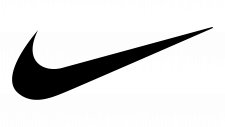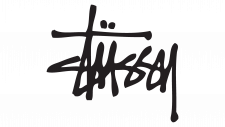Estee Lauder Logo
Estée Lauder, a global cosmetics powerhouse, specializes in skincare, makeup, fragrance, and hair products. Currently, it boasts a presence in over 150 countries, with North America and Asia-Pacific being major markets. The company operates not only under its namesake brand but also oversees a diverse portfolio of subsidiaries like Clinique, MAC, and Jo Malone. The firm continually innovates, maintaining its reputation as an industry leader.
Meaning and history
Founded in 1946 by Estée Lauder and her husband, Joseph, Estée Lauder Companies began its journey with just four products. Estée’s belief in “Every woman can be beautiful” pushed the brand to prominence. Her personal touch, giving free samples, led to rapid growth, and by the 1950s, the company secured its first department store account with Saks Fifth Avenue in New York.
In the 1960s, the firm expanded internationally, with Harrods in London and Hong Kong marking its first forays outside the U.S. The company’s innovation-driven approach saw the launch of the Clinique brand in 1968, the world’s first allergy-tested, dermatologist-driven line.
The 1970s and 1980s were decades of expansion, both in product lines and global reach. Aramis, a line for men, and brands like Prescriptives showcased the company’s versatility. 1981 saw the inauguration of Origins, which boasted naturally-driven products, a trend now mainstream but pioneering then.
The 1990s marked a period of acquisition. MAC, Bobbi Brown, and Aveda were added to the company’s portfolio, broadening its appeal to diverse consumer segments.
Into the 2000s, Estée Lauder continued its expansion strategy, acquiring popular brands like Smashbox and GLAMGLOW. The firm also tapped into luxury fragrances, with brands like Jo Malone London and Tom Ford.
Despite its massive growth and diversification, the company remains a family affair. The Lauder family continues to hold significant influence, with various members holding key leadership positions. Over the years, Estée Lauder Companies have evolved from a modest four-product offering to a global cosmetic empire, upholding Estée’s vision and spirit of innovation.
1946 – 1956
1956 – 1980
1980 – Today
Two interpretations exist. The primary one showcases a visual symbol, which has influenced contemporary designs. Here, the majestic “E” and “L” are sketched with delicate, curvaceous lines that intertwine, crafting an elegant signature. It mirrors a monogram encased within a slender-bordered square.
While externally it appears as a straightforward geometric emblem, its internal intricacies reveal multiple overlapping pathways, exuding the refined sophistication of the brand’s founder. Adjacently positioned (on the immediate right) is the full moniker, Estée Lauder, highlighting the distinct accent on “é.” Underneath, the word “companies” is presented in bold capital letters.
The alternative rendition is primarily typographic, emphasizing solely the brand originator’s first and last names. The chosen typeface is Optima. At a glance, it bears similarities to its predecessor, but subtle nuances differentiate them. This version has a broader and more refined second letter.
The present-day brand logo echoes elements from its forerunners. Words align linearly, and “Companies” alongside “Estée Lauder” share proportional prominence. A slight curve now adorns the tail of the letter R, and graphic elements like lines and trims have been rendered more robust.














